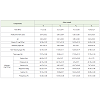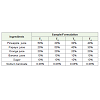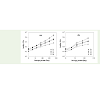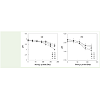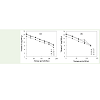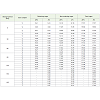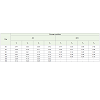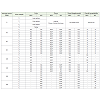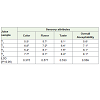Research Article
Production and Investigation of Biochemical and Organoleptic Changes of Mixed Fruit Juiceduring Storage
Md. Mossarrof Hossain1,4, Mohammad Rezaul Islam Shishir2*, Md. Saifullah2, Kamal Uddin Sarker3, Safeuzzaman1,Mohammad Atikur Rahman4
1Department of Food Technology, Thakurgaon Polytechnic Institute, Thakurgaon, Bangladesh
2Department of Process and Food Engineering, Universiti Putra Malaysia, Serdang, Malaysia
3Department of Agricultural and Industrial Engineering, Hajee Mohammad Danesh Science and Technology University, Dinajpur, Bangladesh
4Department of Food Processing and Preservation, Hajee Mohammad Danesh Science and Technology University, Dinajpur,Bangladesh
Corresponding author: Mohammad Rezaul Islam Shishir, Department of Process and Food Engineering, Universiti PutraMalaysia, Serdang, 43400, Malaysia, Tel: +60103655101; E-mail: rezaulislamupm@gmail.com
Citation: Hossain MM, Shishir MRI, Saifullah M, Sarker KU, Safeuzzaman, et al. Production and Investigation of Biochemical and Organoleptic Changes of Mixed Fruit Juice during Storage Period. Indian J Nutri. 2016;3(1): 119.
Copyright © 2016 Shishir MRI, et al. This is an open access article distributed under the Creative Commons Attribution License, which permits unrestricted use, distribution, and reproduction in any medium, provided the original work is properly cited.
Indian Journal of Nutrition | ISSN: 2395-2326 | Volume: 3, Issue: 1
Submission: 07/02/2016; Accepted: 23/02/2016; Published: 01/03/2016
Abstract
A blend of different fruits has a great specialty on its splendid color, flavor, taste and nutritional contents. The purpose of this study was to explore the acceptable formulation of mixed fruit juice with better storage stability. The mixed fruit juice samples were prepared in four formulations incorporating pineapple, papaya, banana and orange with the addition of sugar (10%) and sodium benzoate (0.08%). Then the juices were heated for 5 minutes at 65 °C, bottled inair tight plastic bottle and stored at 4 °C for 180 days and 25 ºC for 120 days. It was found that TSS, acidity, total sugar, and bacterial load increased slightly, but vitamin C and pH decreased gradually during the storage periods. Fading of color and off flavor was found at the end of storage period. The storage temperature of 4 °C was more effective to hold the quality of juice samples against biochemical changes. T4 sample showed better retention of vitamin C, pH,acidity and total sugar than other samples both at 4 °C and 25 °C. Panelists preferred the T4 sample most, which showed maximum hedonic scale ‘8’ point on sensory properties. It is also observed that T4 ensured the better shelf life to preserve the color, flavor and taste until 150 days at 4 °C and 105 days at 25 °C.
Keywords: Mixed fruit juice; Biochemical properties; Sensory evaluation
Introduction
Fresh fruits are wonderful source of energy, vitamins, antioxidants,minerals and fibers. It has been a significant part of human diet andfood supplement in order to its demanding and effective role in humannutrition [1,2]. Bangladesh is a plentiful source in fruits production.The most yielded fruits in Bangladesh are mango, papaya, jackfruit,pineapple, banana and orange [3]. Fruits are produced in abundant especially in peak season and consumed locally, but they are seldomprocessed. The main reasons are physiological injuries, inadequatestorage facilities, poor transportation and lacking of knowledgeabout preservation technique. Fruits have high moisture contentand exhibits relatively high metabolic activity compared with otherderived foods and continues after harvesting, thus making most fruitshighly perishable commodities [4]. Thus, there is need for diversity in commercial utilizations. There are numerous ways of utilizing andprocessing fruits such as processing into juice, jams, concentrates,pulp and dehydrated products.
Fruit juices an imperative trade product in most countries formany years, which are available in their natural concentrations orin treated forms [5]. Since different fruits have different nutritionalvalue and rich antioxidant properties, the production of mixed fruitjuice in order to combine all the basic nutrients and vital antioxidantsmight be an excellent food product for human diet. This usually givesa better quality juice nutritionally and organoleptically [6]. Fresh fruitjuices are favourable to microbial and enzymatic action. The spoilageof fruit juices is basically reasoned to the presence of osmophillicmicroflora, which causes fermentation and leads to produce offflavorhappened in the fruit juices [7]. Thermal treatment and usesof preservatives could be effective way to inactivate the microbialand enzymatic activity and extend the shelf life [8]. Furthermore,vitamin C becomes unstable in the presence of oxygen and oxidationdepends on pH (at pH 4.3 it is very fast), temperature (oxidation riseswith increasing temperature to 60 °C), the presence of heavy metals(particularly Cu). Storage temperature is also the prime limiting factorfor shelf life of orange juice [9]. Thus, there is needed a throughoutstudy on the quality of mixed fruit juice after production and duringstorage that how the storage condition influences the final productbiochemically and organoleptically. The present study was carriedout for the development of mixed fruit juice from pineapple, papaya,orange and banana and investigates its biochemical and organoleptic properties during storage period.
Materials and Methods
Materials
Ripe banana, pineapple, papaya, orange, sugar, plastic bottle etc.were collected from local market of Dinajpur, Bangladesh. Sodiumbenzoate was used as a preservative from the laboratory of Foodprocessing and preservation, HSTU.
Preparation of fruit juice
Fresh, fully ripe and sound fruits were used for extraction ofjuice. After washing thoroughly with clean water, the fruitswere peeled by hand and cut into pieces and then transferredinto juicer. The extracted juice was filtered by muslin cloth andthen heated for 5 minutes at 65 °C and cooled immediately.The juice was stored in a deep freeze at a temperature of -20 °C for future analysis. In order to prepare mixed fruit juice, fourformulations were prepared for this study as shown in Table1. The choice of juice-mix ratio was selected from publishedliterature performed by different researchers [10,8,11]. Allformulations commonly contained 10% banana juice, 20%orange juice, 10% sugar and 0.08% sodium benzoate. All theingredients were mixed thoroughly and heated at 65 °C for 5minutes in prior to proper mixing. The heated mixed juice wasthen cooled and filled into plastic bottles [12].
Biochemical Analysis
The stored mixed fruit juice were analyzed for their mineralcomposition (Na, K, Ca, Mg, S, P), titratable acidity, pH, total solublesolids (TSS), reducing sugar & non-reducing sugar, total sugar,vitamin C and microbial load/total plate count. The determinationswere carried out according to published method, such as total solublesolids (TSS) by using a refractometer (HI 96801, Keison InternationalLtd., Chelmsford, England), acidity, ascorbic acid, reducing sugar& non-reducing sugar followed by the method of Rangana [13],pH by the conventional procedure followed by [8] using a pHmeter (HI98190, Hanna Instruments Inc., Limena, Italy), mineralcontent by the method of Pearson [14] and the total viable count of microorganism followed by Sharf [15]. All the determinations weredone in triplicate and the results were expressed as mean value.
Sensory Evaluation
Sensory evaluations of all the samples of mixed fruit juice weredone by taste testing panel. The taste testing panel was made up with10 test panelists. They were asked to evaluate color, flavor, taste andoverall acceptability by a scoring rate on a 9 point hedonic scale,means 9= Like extremely, 8= Like very much, 7= Like moderately,6= Like slightly, 5= Neither like nor dislike, 4= Dislike slightly, 3=Dislike moderately, 2= Dislike very much and 1= Dislike extremely.
Storage stability of prepared mixed fruit juice
The mixed fruit juice samples were filled into air tight plasticbottles. The samples were stored at two temperature such as roomtemperature (25 ± 2 °C) and refrigerated temperature (4 ±1 °C).
Statistical analysis
The data obtained were analyzed and interpreted by analysis ofvariance (ANOVA) and Duncan’s Multiple Range Test (DMRT) ata level of 5% of significance, using Statistical Analysis System (SAS9.3 TS L1M2, SAS Institute Inc., NC, USA). Values were presented as mean ± standard errors of 3 observations.
Results and Discussion
Chemical and organoleptic properties of mixed fruit juice
The prepared mixed juice were analyzed for TSS, acidity, pH,vitamin C, reducing sugar, non-reducing sugar, total sugar andmineral contents such as, sodium (Na), potassium (K), calcium (Ca),magnesium (Mg), sulpher (S) and phosphorus (P). The compositionsof mixed fruit juice on the day of preparation are given on Table 2. The total soluble solid of mixed fruit juice samples was around10.8-12.3ºBrix, which was higher than the findings of Islam et al. [8].The acidity, pH, vitamin C and total sugar ranged from 0.30-0.36%,3.84-3.92, 13.21-14.62 mg/10 g and 16.89-17.70%, respectively. Theacidity was lower than the findings of Islam et al. [8], which indicatethe better shelf stability against biochemical changes. The SampleT4 showed the better characteristics having maximum vitamin C of14.62 mg/100 g and comparatively higher value of pH. Similarly,Sample T1 was better in terms of having higher Ca and Mg and T3ensured higher k (Table 1).
Biochemical changes during storage
Acidity is directly proportional and is a measure of shelf life of the product and guard against the attack of micro-organisms. It also helps to ensure some chemical changes during preparation and storage.
Acidity for all the samples at various storage periods was observed(Figure 1). The initial acidity was 0.34%, 0.36%, 0.30% and 0.33% insamples T1, T2, T3 and T4 respectively. After six months of storage at4 °C, the acidity changed to 0.64%, 0.55%, 0.56% and 0.48% in T1, T2,T3 and T4sample, respectively. After four months of storage at 25 °C,the acidity changed to 0.58%, 0.51%, 0.52 % and 0.45% in samplesT1, T2, T3 and T4, respectively. The increase of acidity might be due toproportional relation with the increased of storage periods. Similarreports have been investigated by several researchers [16,12,17]. Theleast changes were found in T4 samples around 0.48% at 4 °C after 180days (Figure 1a) and 0.45% at 25 °C after 120 days (Figure 1b).
pH is inversely proportional to the acidity of any medium. Theresults showed that the increase in acidity causes decrease in pH(Figure 1 and 2). The decrease in pH and increase in acidity duringstorage might be due to degradation of carbohydrates present inmixed fruit juice by the action of microorganisms [18]. After sixmonths of storage at 4 °C, the pH were changed from 3.84 to 3.30,3.91 to 3.40 and 3.85 to 3.00 in sample T1, T2, T3 and T4,respectively(°a). On the other hand, after four months of storage at 25 °C,the pH were changed from 3.84 to 3.40, 3.91 to 3.50, 3.85 to 3.30, and3.92 to 3.60 in sample T1, T2, T3 and T4 respectively (°b). Thesefinding are almost similar to earlier study by Dhaliwal and Hira [19],Majumdar et al. [17] and Mishra et al. [16]. High acid and low pHmay be due to production of acetic acid and lactic acid during storage.However, T4 sample showed the least changes of pH both in 4 °C and25 °C during storage (°).
Figure 3 showed that vitamin C or ascorbic acid reduced tosignificant amount in mixed juices during storage. After six monthsof storage at 4 °C, vitamin C changed to 8.50 mg/100 g, 7.25 mg/100g, 8.35 mg/100 g and 8.65 mg/100 g in samples T1, T2, T3 and T4,respectively. After four months of storage at 25 °C, vitamin C changedto 8.10 mg/100 g, 7.90 mg/100 g, 8.00 mg/100 g and 8.30 mg/100 gin samples T1, T2, T3 and T4, respectively. Vitamin C is very sensitiveto oxygen, light and heat, which caused to easily oxidize in presenceof oxygen by both enzymatic and non-enzymatic catalyst [12,20,21].
The reducing sugar content of the formulated samples slightlyincreased during storage periods, while non-reducing sugardecreased slightly (Table 3). The reducing sugar slightly increased dueto hydrolysis of sugar or may be due to the inversion of sucrose underacidic environment. Similar results were found that reducing sugarchanged from 2.71% to 8.82% in apple and apricot blend juice duringstorage [12]. The decrease of non-reducing sugar is similar to the findings of Hussain et al. [22], where non-reducing sugars decreasedfrom 2.56 to 1.88% in apple-apricot blended juice. However, anegligible change in total sugar content of the juice samples wasobserved both at 4 °C and 25 °C (Table 3). This finding supportswith Bhardwaj and Mukherjee [23]. However, the maximum nonreducingsugar and total sugar were found in T4 sample around12.25% and 17.80%, respectively and T1 showed maximum reducingsugar of around 5.60-5.65%.
Table 3: Changes in reducing sugar and non-reducing sugar in mixed fruit juice during storage period.
In microbiological study, immediately after preparation of juice,the total no. of viable count was not uniform. It also showed thatthe total colony count increased slightly with the increase of storageperiods (Table 4). The initial microbial loads of all samples werefound 3.47, 3.53, 3.65, 3.42 log cfu/ml respectively. During storageperiods it increased slightly in all samples. The microbial load wasvery low and far below the safely level up to 5 months storage at 4 °C,but microbial load was higher after 3 months storage at 25 °C. Thisresult was similar with Zurowietz [24].
Table 4: Effect of storage condition on bacterial growth/total plate count (log cfu/ml) of mixed fruit juice samples during storage period.
Organoleptic changes during storage
The sensory evaluation of mixed fruit juice during storage periodof 180 days was carried out to evaluate the color, flavor, visual fungalgrowth and overall acceptability as shown in Table 5. The color, flavorand visual fungal growth of the juice samples was unchanged until 90days at 25 °C and 120 days at 4 ºC, which resulted the juice samplesto normal (N) overall acceptability (Table 5). Then, the color after 90days at 25 °C and after 120 days at 4 °C has become changed, producedoff flavor and lost the overall acceptability. This is happened the dueto the increase of microbial activity and chemical reactions [8], whichhas been observed by the visual growth of fungal (Table 5) and theincrease of total plate count (Table 4). However, T4 sample was themost effective to hold its sensory property during storage period. It isobserved that the color as NC, flavor as NOF, visual fungal growth asNG and overall acceptability as N were found until 150 days at 4 °Cand 105 days at 25 °C (Table 5).
The mean scores for color, flavor, taste and overall acceptabilityof different juice samples are presented in Table 6. According to twoway analysis of variance ANOVA, the juice samples were significantly(P< 0.05) different from each other. Panelists preferred the T4 sample,which showed hedonic scale ‘8’ point in flavor, taste and overallacceptability indicates that the sample has been liked very much.
The color of T4 sample also showed 7.7 point, which meansmoderately like and is also higher than the other samples (Table 6).The least hedonic points were found for T1 sample, which indicatesthe least preference by panelists in terms of color, flavor, taste andoverall acceptability.
Conclusion
The experiment was carried out to explore the acceptableformulation of mixed fruit juice incorporating pineapple, papaya,orange and banana fruit and its storage stability. The sample T4(pineapple 40%, papaya 30%, orange 20%, banana 10%) was moreacceptable due to its delightful yellow color and better chemicalcomposition such as, TSS 10.8ºBrix, acidity 0.33%, pH 3.92, vitaminC 14.62 mg/100g, reducing sugar 5.30%, non-reducing sugar 12.40%, potassium 43.16 mg/100g, calcium 7.67 mg/100g and magnesium18.33 mg/100g. The storage temperature of 4 °C was more effectiveto hold the quality of juice samples against biochemical changes andT4 sample showed better retention of vitamin C, pH, acidity and totalsugar than other samples both at 4 °C and 25 °C. Panelists preferredthe T4 sample most, which showed maximum hedonic scale ‘8’ pointin flavor, taste and overall acceptability at the level of 5% significance. It is observed that T4 ensured the better shelf life to preserve the color, flavor and taste until 150 days at 4 °C and 105 days at 25 °C. The experimental finding concludes that the mixed fruit juice with a simple preservatives sodium benzoate (0.08%) and packed in plastic bottles manually can be easily preserved for three months in room temperature and for up to five months in refrigerated temperature.
Acknowledgement
The authors would like to thank the Department of FoodProcessing and Preservation, Hajee Mohammad Danesh science andTechnology, Dinajpur-5210, Bangladesh for supporting this researchproject.
References
- Okwu DE, Emenike IN (2006) Evaluation of the phytonutrients and vitamin content of citrus fruits. Int J Mol Med Adv Sci 2: 1-6.
- Dosumu OO, Oluwaniyi GV, Awolol, Okunola MO (2009) Stability studies and mineral concentration of some Nigerian packed fruit juices, concentrate and local beverages. Afri J Food Sci 3: 82-85.
- FAOSTAT (2013) Food and agriculture organization of the United Nations statistics division.
- Atungulu G, Nishiyama Y, Koide S (2004) Electrode configuration and polarity effect on physicochemical properties of electric field treated apples postharvest. Bios Eng 87: 313-323.
- Vasavada PC (2003) Microbiology of fruit juice and beverages. In: Foster, T and Vasavada, P.C (Eds). Beverage quality and safety, CRC Press, USA, 95-123.
- Kausar H, Saeed S, Ahmad MM, Salam A (2012) Studies on the development and storage stability of cucumber-melon functional drink. J Agric Res 50: 239-248.
- Tournas VH, Heeres J, Burgess L (2006) Moulds and yeasts in fruit salads and fruit juices. Food Microbiol 23: 684-688.
- Islam MA, Ahmad I, Ahmed S, SarkerA (2014) Biochemical composition and shelf life study of mixed fruit juice from orange & pineapple. J Environ Sci Natural Resources 7: 227-232.
- Supraditareporn W, Pinthong R (2007) Physical, chemical and microbiological changes during storage of orange juices cv. Sai Nam Pung and cv. KhieoWaan in Northern Thailan. Int J AgBiol 9: 726-730.
- Offia-Oluan BI, Ekwunife OA (2015) Production and evaluation of the physico-chemical and sensory qualities of mixed fruit leather and cakes produced from apple (Musa Pumila), banana (Musa Sapientum), pineapple (AnanasComosus). Nige Food J 33: 22-28.
- Chowdhury MGF, Islam MN, Islam MS, Islam AFMT, Hossain MS (2008) Study on preparation and shelf-life of mixed juice based on wood apple and papaya. J Soil Nature 2: 50-60.
- Hussain I, Zaib A, Ayub M (2011) Evaluation of apple and apricot blend juice preserved with sodium benzoate at refrigeration temperature. World J Ag Sci 6: 79-85.
- Ranganna S (1986) Hand book of analysis and quality control for fruits and vegetable products. Tata McGraw-Hill publishing company limited. New delhi, 11-12.
- Pearson D (1976) The Chemical Analysis of Foods, 7th ed. Churchill Living stone, London.
- Sharf (1966) Recommended methods for the microbiological examination of foods. Am Public Health Assoc, New York, NY: 205.
- Mishra V, Puranik V, Singh V, Mudita V, Neelam Y, et al. (2012) Development of vitamin C rich value added beverage. Am J Food Technol 7: 222-229.
- Majumdar TK, Wadikar DD, Bawa AS (2010) Development, stability and sensory acceptability of cucumber-basil juice blend. Afri J Food Agric Nutr and Dev 10: 4093-4108.
- Cortes C, Esteve MJ, FrigolaA (2008) Color of orange juice treated by high intensity pulsed electric fields during refrigerated storage and comparison with pasteurized juice. Food control 19: 151-158.
- Dhaliwal M, Hira CK (2004) Effect of storage on physico-chemical and nutritional characteristics of carrot-spinach and carrot-pineapple juices. J Food Sci Technol 41: 613-617.
- Mishra P, Verma M, Mishra V, Mishra S, Rai GK (2011) Studies on development of ready to eat amla (Emblica officinalis) chutney and its preservation by using class one preservatives. Am J Food Technol 6: 244-252.
- Puranik V, Mishra V, Singh N, Rai GK (2011) Studies on development of protein rich germinated green gram pickle and its preservation by using class one preservatives. Am J Food Technol 6, 742-752.
- Hussain I, AlamZeb A, Ayub M (2010) Quality Attributes of Apple and Apricot Blend Juice Preserved with Potassium Sorbate during Storage at Low Temperature. Internet Journal of Food Safety 12: 80-86.
- Bhardwaj RL, Mukherjee S (2010) Effects of fruit juice blending ratios on kinnow juice preservation at ambient storage condition. Afri J Food Sci 5: 281-286.
- Zurowietz V (1996) The world of senses. Fliissingesobst 63: 215-218.

